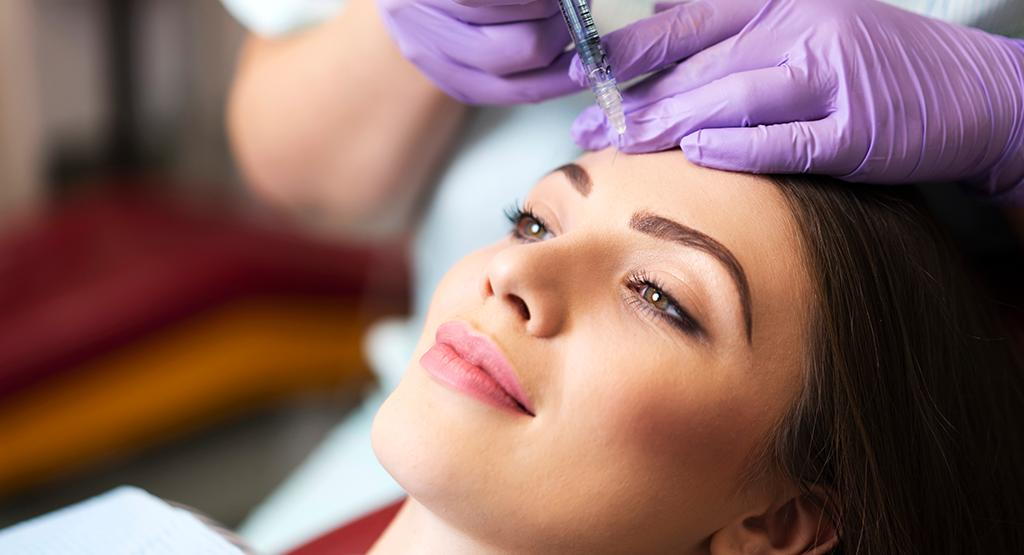
While we may gain wisdom with every year that passes, many of us would prefer to avoid some of the other “gifts” that come with age. The frown lines. The crow’s feet. The forehead creases.
Botox has become one of the most popular cosmetic treatments in the world for women and men seeking to diminish the appearance of these natural formations.
In fact, the American Society of Plastic Surgeons reported that Botox use increased by 819 percent between 2000 and 2017. And this upward trend in minimally invasive procedures shows no sign of stopping.
What is Botox?
Botulinum toxin therapy, or Botox, is derived from Clostridium botulinum bacteria, found in soil, forests, and lakes. When used in a professional setting as a cosmetic injection, only a minimal dose of the toxin is used, making it very safe (and, of course, FDA approved).
This neurotoxin injectable paralyzes the muscles underneath your skin. As an injectable neuromodulator, it relaxes nerve-muscle imbalance, so the muscles stop moving, reducing existing wrinkles and preventing future ones.
The Mechanics of the Face
When you frown, squint, smile, or raise your eyebrows, your nerves release a chemical messenger called acetylcholine at the spot where your muscle cells meet your nerve endings. The acetylcholine then attaches to the muscle cells, causing them to contract. Botox prevents this release of acetylcholine, which stops the muscle from contracting.
So, those deep grooves that years of frowns, squints, and smiles leave behind? The damage caused by free radicals from the sun and the environment? Botox targets those dynamic wrinkles, temporarily diminishing them and rejuvenating your appearance.
The Benefits of Botox
Cosmetic Botox injections work beneath the surface of the skin, temporarily making fine lines look visibly smoother. Specific benefits include:
- Relaxed scowl lines between your eyebrows
- Diminished horizontal wrinkles on the forehead
- Lifted mouth corners, which can turn down with age
- Softened smoker’s lines around the mouth
- Reduced crow’s feet (wrinkles around the eyes)
- Softened vertical neck cords
While Botox is most often used for appearances, it’s also FDA-approved for medical use. It can be used to conditions that affect the neuromuscular system, including:
- Hyperhidrosis, an excessive sweating condition
- Crossed eyes or strabismus
- Migraine prevention
- Blepharospasm or eyelid spasms
- Overactive bladder
- Cervical dystonia, a neurological movement disorder
There are also increasing off-label uses, such as treating facial redness, psoriasis, alopecia, and the effects of diseases like Raynaud’s disease and Hailey-Hailey disease.
The Best Candidates for Botox (and What to Expect When You Get it)
The severity of your lines will dictate if the treatment is right for you — not your age. In fact, 64% of plastic surgeons report seeing a rise in cosmetic surgery or injectable treatments for women and men in their early 30s. If you’re experiencing any of the medical conditions previously mentioned, your doctor can help determine if Botox is the right treatment option for you.
Botox injections are a longer-lasting cosmetic solution than creams, serums, and make-up, but they’re not a permanent solution. You’ll start to see results 24 to 48 hours after treatment, with full results reached by 30 days. And while everyone is different, the effects generally last 3 to 5 months. Once they wear off, you’ll be able to contract these muscles again, and the wrinkles will start to reappear.
The Dos and Don’ts When Getting Botox
Do your research and schedule your Botox consultation and treatment with a qualified, experienced professional. On the day of your appointment, you should avoid the following:
- Blood-thinning medications (e.g., aspirin and ibuprofen)
- Fish oil supplements and multivitamins
- Alcohol
Following your appointment, you can carry on with your routine with some slight modifications. Avoid the following for at least four hours:
- Make-up
- Touching or massaging the area
- Facials
- Lying down
- Putting your head down (avoid shoe shopping or bending)
- Headwear that fits tightly on the forehead
You’ll also need to avoid strenuous exercise for at least 24 hours after your treatment.
Windsor Dermatology is Your Source for Botox
As a cosmetic dermatology clinic, Windsor Dermatology specializes in minimally invasive procedures like Botox to rejuvenate your appearance. To learn more about how Botox injections can help you, call 609-443-4500 to set up a consultation.



